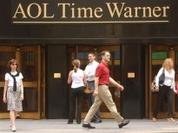
NEW YORK - A year ago, America Online Inc. was seen as an ailing dinosaur of the dial-up era, its Internet access business fading fast. Now that it's tapping into the online advertising boom by opening up its content to anyone who wants it, AOL is a hot property being courted by powerhouse suitors including Microsoft Corp., Google Inc. and Comcast Corp.
Google and Comcast are said to be in talks about taking a joint stake in AOL for its Web portal. That follows discussions between Microsoft and AOL parent Time Warner Inc. about a possible partnership with the MSN online business.
Credit AOL's decision to abandon its longtime strategy of exclusivity and unleash its rich array of offerings — concerts, news, sports and e-mail — to the World Wide Web for free, a model Yahoo Inc. (Nasdaq:YHOO - news) drove to become the Web's top brand.
"They were a company waiting to die," industry analyst Rob Enderle said Thursday of AOL. "They've done some work to make the property more attractive. The portal strategy is what gave them a future. It's nowhere near where it needs to be, but at least they've got one."
With such successes as delivering seven separate video feeds from July's Live 8 concerts — all without any meltdowns — AOL is no longer viewed as a drain on its parent even as AOL's dial-up subscribers leave in droves for increasingly cheaper high-speed cable and DSL phone lines.
Indeed, AOL's new strategy lets it tap the growing U.S. Internet advertising market, which jumped 26 percent to a record $5.8 billion for the first half of the year, according to the Interactive Advertising Bureau. And that's only a fraction of the overall ad industry, meaning there's still plenty of room to grow.
Time Warner's chief executive, Dick Parsons, told an investor conference last month that accelerating AOL's transformation into an advertising-driven business was a top priority and the best way to add value to Time Warner's long-slumping share price.
Analysts say a Google-Comcast-AOL deal could benefit all parties and shows how well AOL has managed to shed its image as a dying business. (Subscriptions remain a large part of AOL's revenue base but continue to drop. As of June 30, it had 20.8 million U.S. subscribers, down from a peak of 26.7 million in September 2002).
AOL and its collection of properties, including Moviefone and MapQuest, still aren't viewed as a destination site like Yahoo or MSN, said Enderle.
AOL's free and subscription sites have grown 3 percent in the past year, attracting 72.5 million visitors in September, according to Nielsen/NetRatings. But Google grew 28 percent in visitation, to 79.4 million that month.
And both trailed Yahoo and Microsoft.
A combined AOL-Google would have made the brand tops with 107 million visiting either or both in September, surpassing industry leading Yahoo's 99.3 million.
AOL could benefit through referrals from Google's search site as well as Comcast's high-speed subscribers, said Jonathan Gaw, a research manager at IDC.
For Google, AOL offers video and other programming that Google has been increasingly trying to deliver as it expands beyond search. A stake in AOL also could let Google preserve a lucrative ad-and-search partnership that now accounts for more than 10 percent of Google's revenues, according to Google's regulatory filings.
For Comcast, AOL would give it entertainment content, which the cable company sees as key to its future growth. Last year Comcast tried but failed to acquire The Walt Disney Co., and earlier this year it joined with Sony Corp (NYSE:SNE - news). in a successful bid to acquire the Metro-Goldwyn-Mayer movie studio.
AOL also could give Comcast's high-speed Internet business a major opportunity to lure AOL subscribers looking to drop their dial-up connections.
And it would give Comcast the ability to sell more online advertising, particularly if it makes AOL the home page of choice for its broadband users — similar to how SBC Communications Inc. and Verizon Communications Inc. now give their users a window to Yahoo through partnerships.
Gaw said AOL brings experience in making technology user-friendly — a key advantage as computers and televisions converge into one-stop entertainment centers.
"What we're talking about with convergence is taking all these different content sources and putting them into one place," he said. "There's a lot of technology behind that."
Time Warner's share price rose 10 cents, or 0.57 percent, to close at $17.59 Thursday on the
New York Stock Exchange.
No comments:
Post a Comment